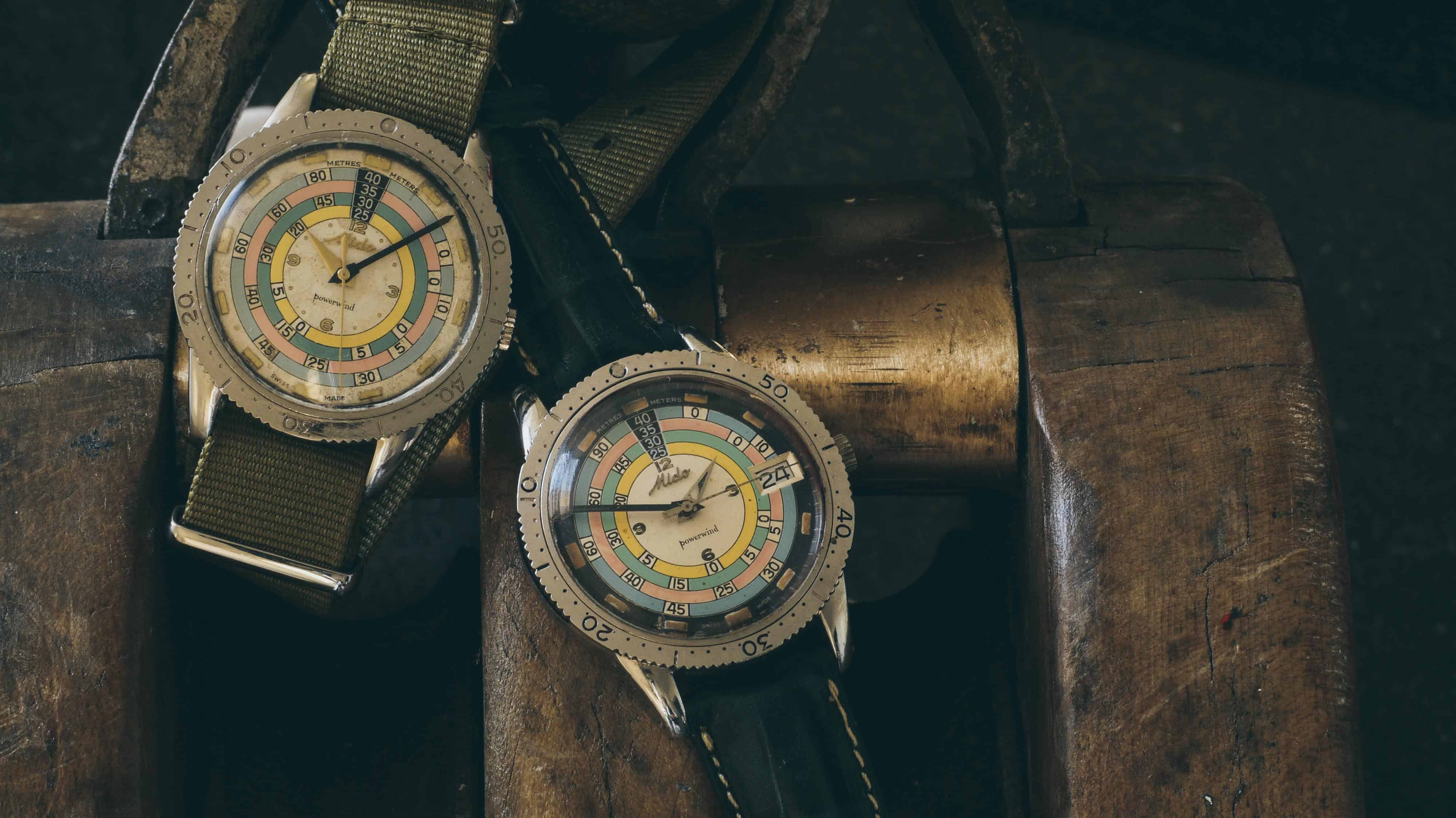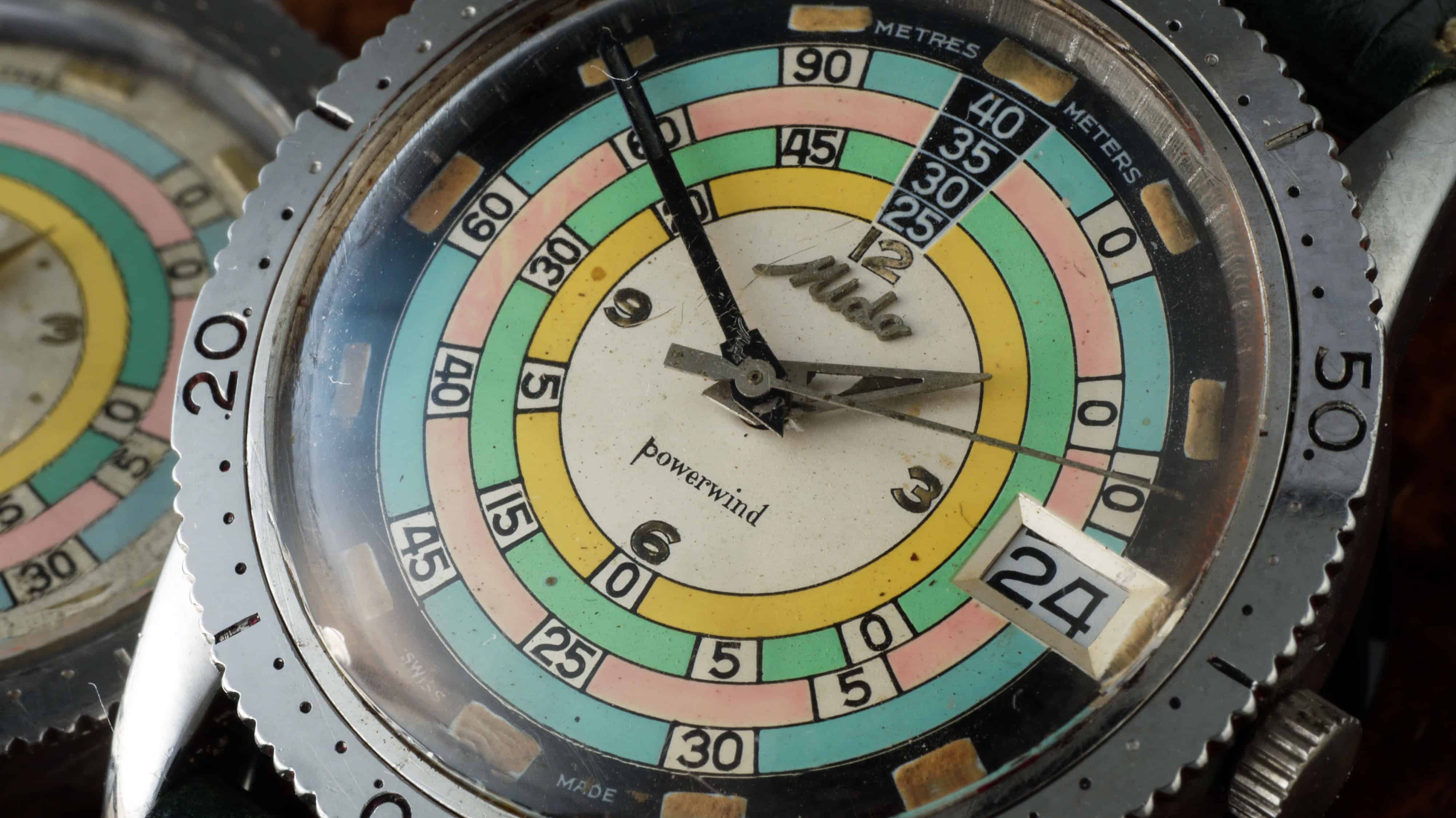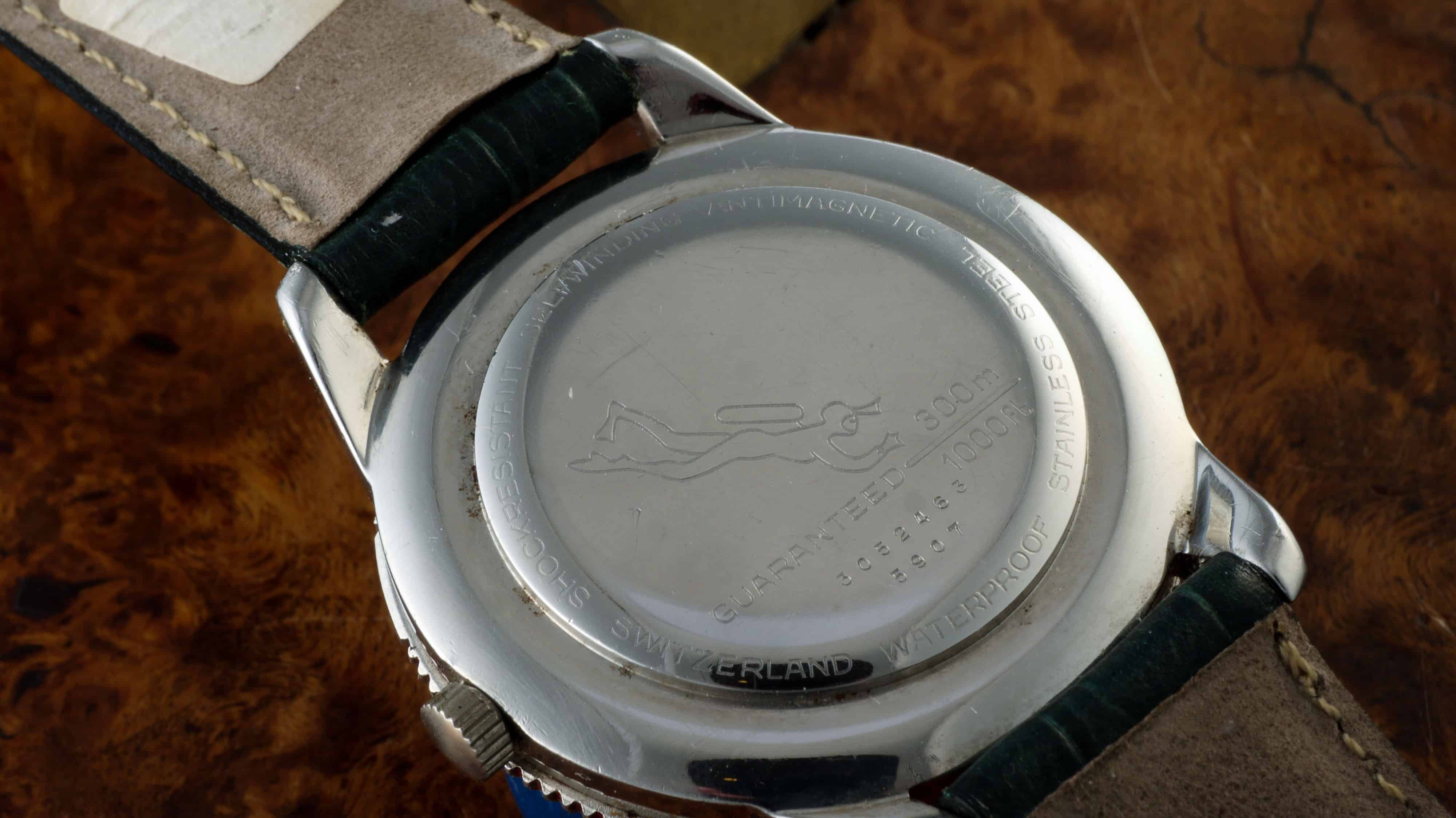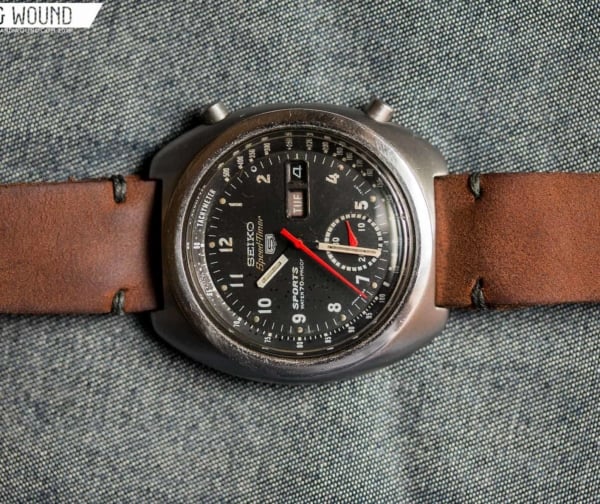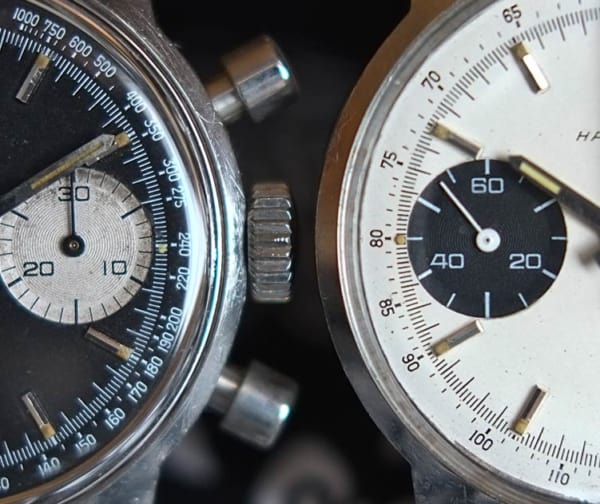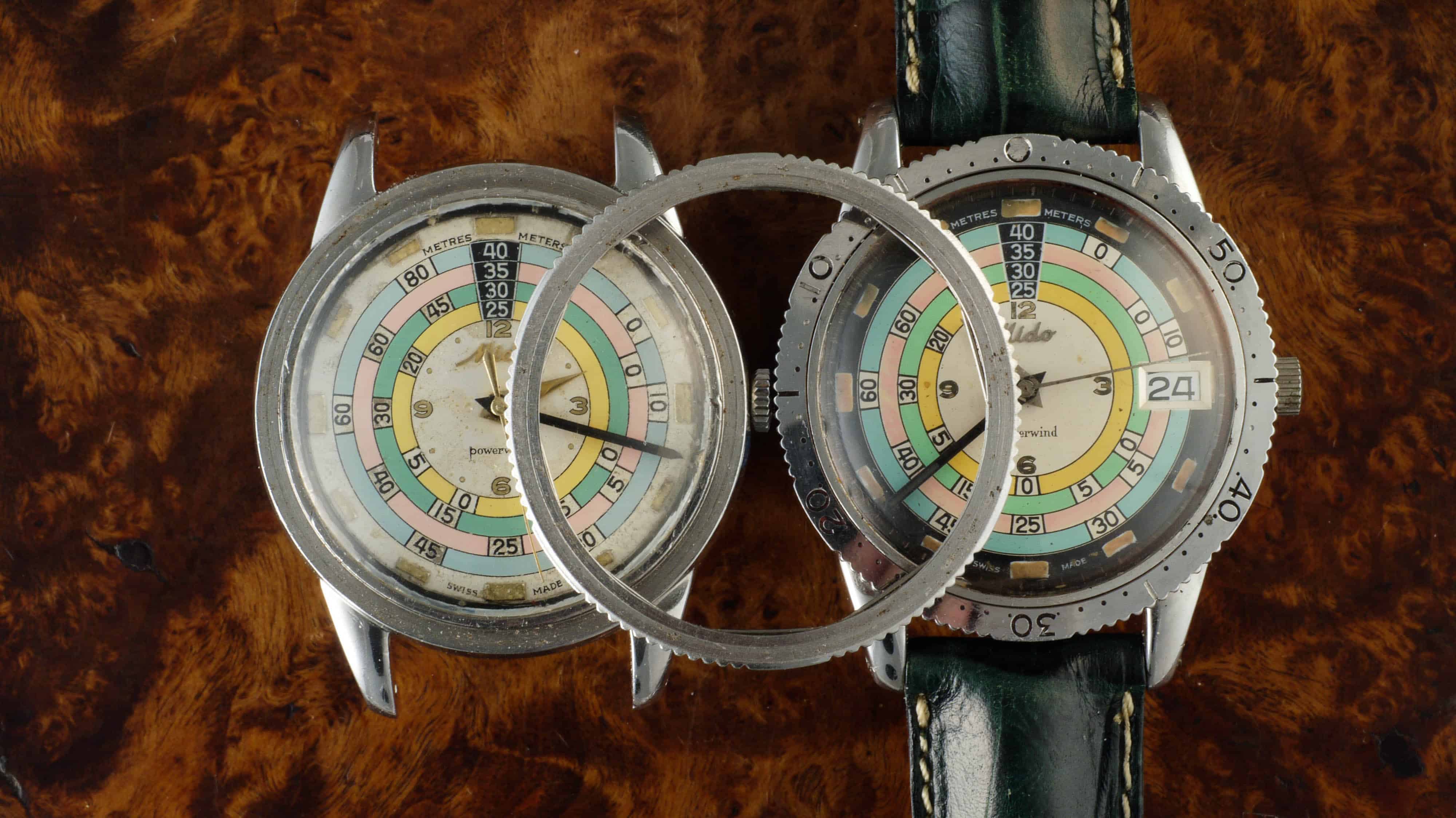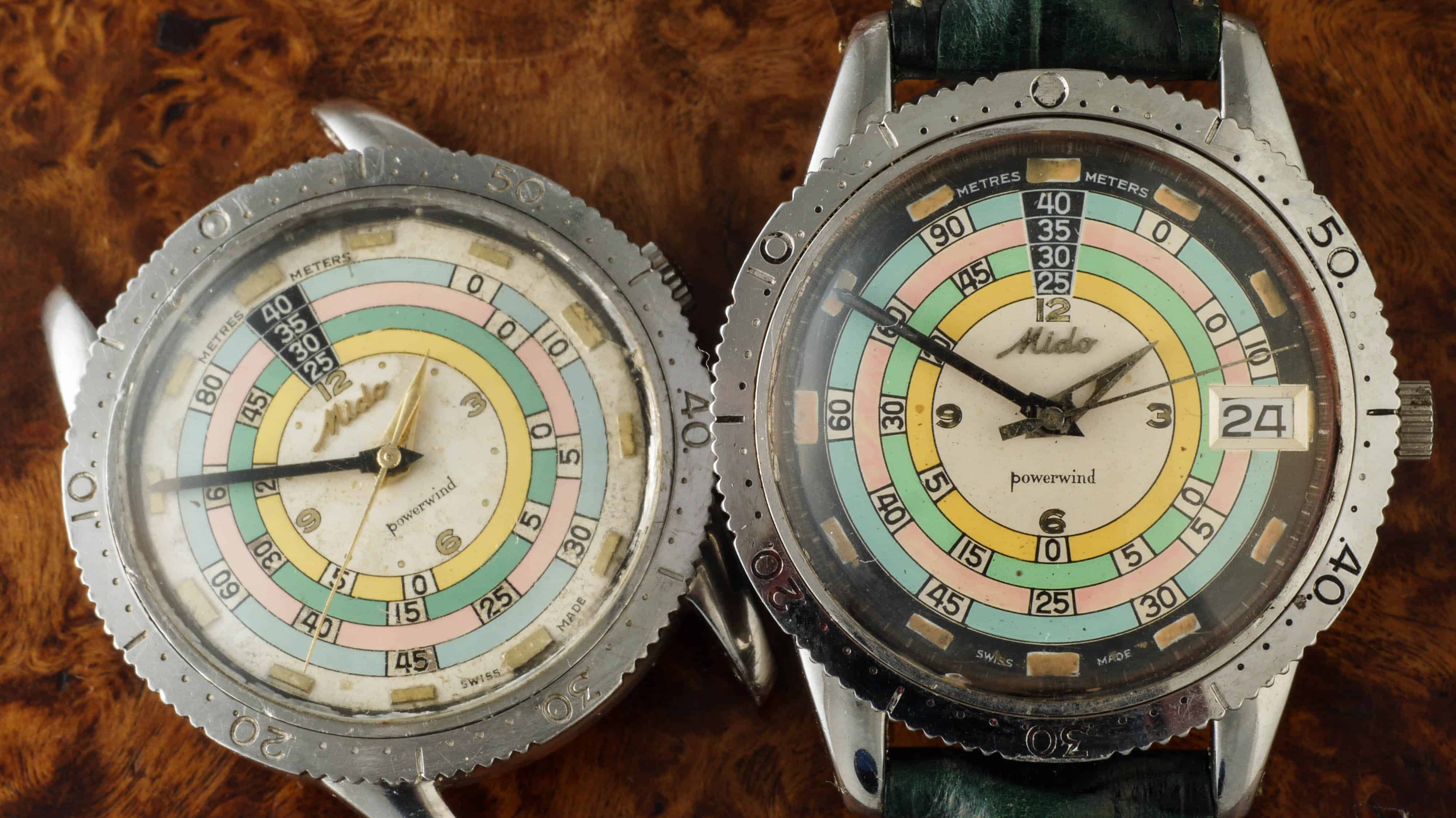Most of you likely know of Dan Henry from his eponymous, vintage-inspired line of value-driven timepieces. But Dan Henry is also a seasoned watch collector and the owner of what may very well be the most expansive personal collection in existence, a fraction of which you can see at Timeline.Watch. Today, we’re kicking off a fun series that will recount some of Dan’s most memorable experiences as a collector. In this first installment, Dan tells us about a rare Mido Powerwind “Rainbow” Diver and his quest to find a replacement bezel.
For me, collecting watches isn’t just a hobby. It’s a full-on obsession that, at times, gets close to the kind of single-minded mania that gets people locked up in rooms with soft walls. Even if I walk past a drug store, I’ll peer in the window to see if there’s anything that ticks.
Sometimes, the story behind a watch can be as interesting as the watch itself. In fact, I often say that I collect as many stories as I do watches. Some of these tales can be stranger than fiction, but real life is often far, far stranger than any story you’ll ever read. Here’s one such story about a Mido Powerwind “Rainbow” Diver.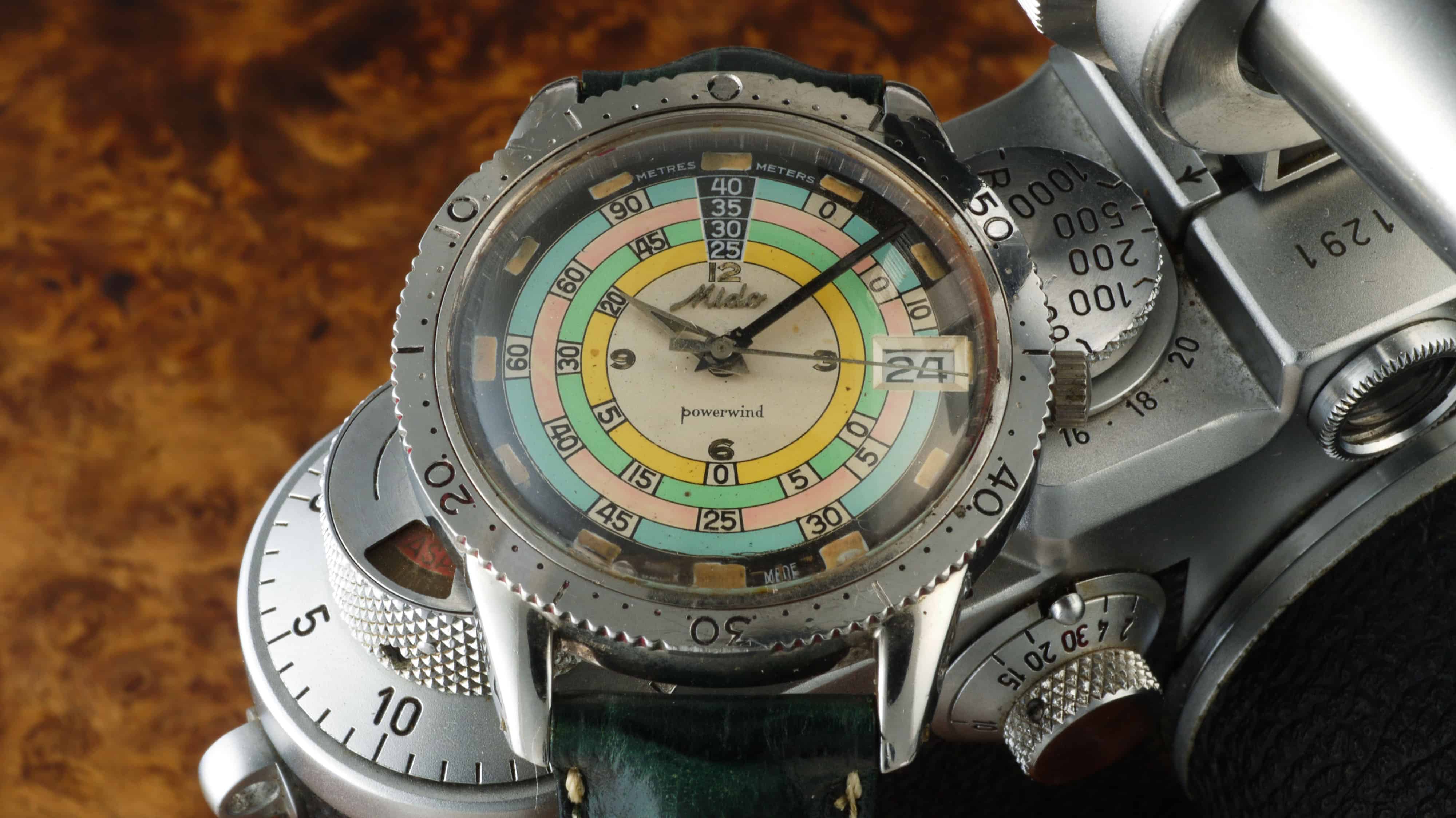









 Featured Videos
Featured Videos




